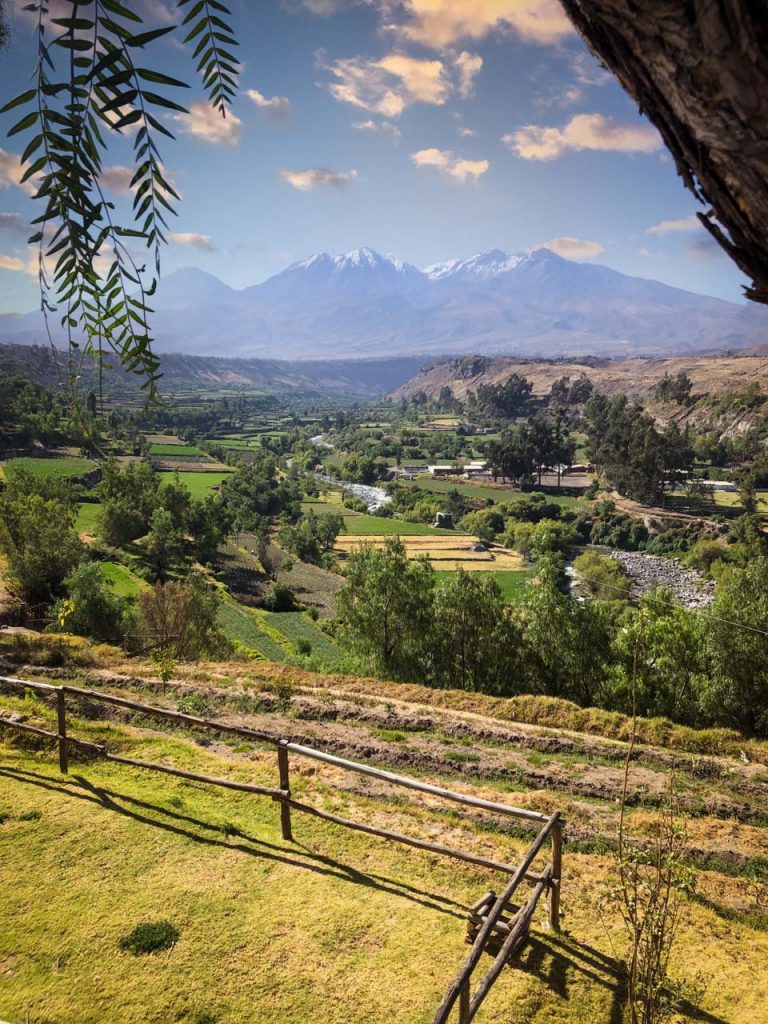Arequipa means ‘behind the volcanoes’ in the language of the Incas. We spent a day in the colonial city where the sleeping volcano Misti looms like a backdrop and gave us a sense of what lay ahead on our roundtrip in Peru.
Written by Mette / Photo by Martin
Translated from Danish
On the fourth day of our 19-day journey, we fly an hour and a half south. From the capital Lima to Peru’s second largest city Arequipa. Despite the relatively short trip, a significant change of scene awaits us. Both in weather and surroundings. The sun shines warmly from a cloudless sky, and the sea breeze is replaced by dry, dusty air.
Arequipa is located a good distance from the coast at an altitude of 2.300 meters, where the Andes begin to show their muscles. Three volcanoes tower proudly into the sky and create a dramatic backdrop to the city, which is built of pearly white volcanic rock from the same mastodons.
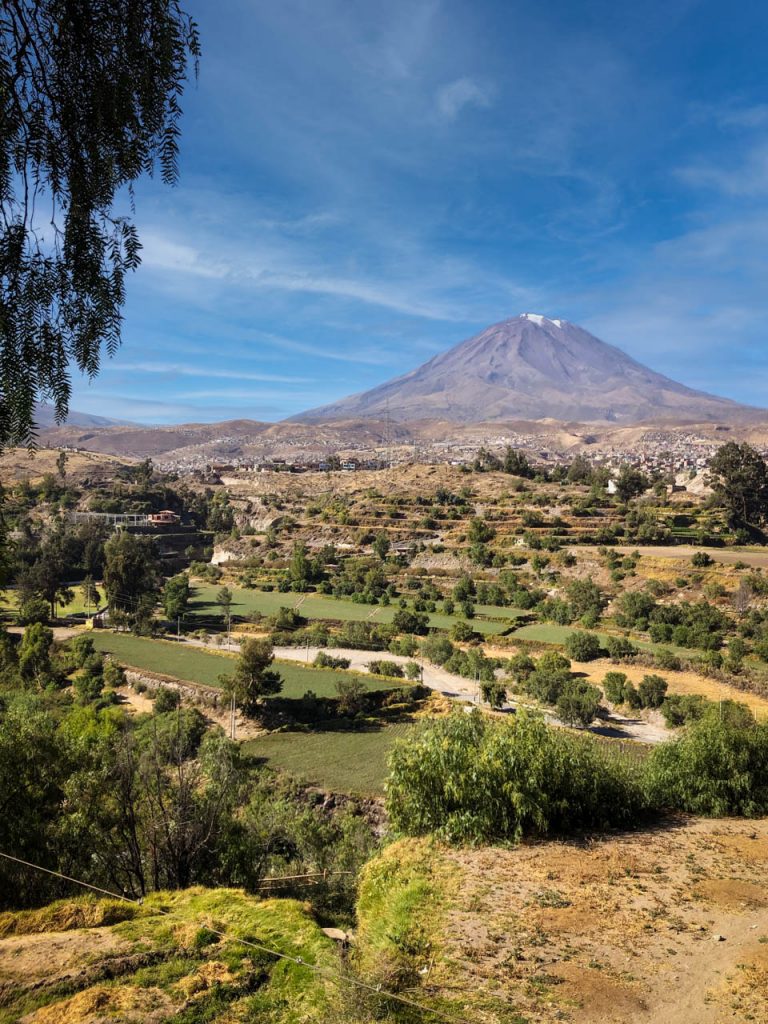
In particular, the almost 6.000 meters high and active volcano Misti is noticeable in the cityscape. Arequipa stretches all the way to the base of the volcano, and it almost looks like the cone-shaped giant shoots up from a forest of houses. Fortunately, Misti has not erupted since the Inca era, but the great forces of nature are part of the eco-system that is of great importance for the area’s lushness.
Outside the city’s white walls and old colonial mansions lies a patchwork of green fields, and along the river, you can see how local farmers still use the Inca terrace system to grow everything from corn, artichokes, passion fruit, and avocado.
A look into the colonial age
Compared to Lima, the capital in Peru, Arequipa feels like a big village, and we fall head over heels for its colonial charm. It’s like stepping back into the 16th century as we explore the narrow-cobbled streets with baroque buildings and large wooden doors painted in strong colours.
The journey back in time only becomes more intense as we pass through the gate of the more than 400-year-old monastery of Santa Catalina, which has been closed to the outside world until 1970. Today it is possible to move around the labyrinth of streets, rooms, and squares, where barely 500 nuns have had their daily routine. Isolated from the rest of the city, they lived in a world of their own.
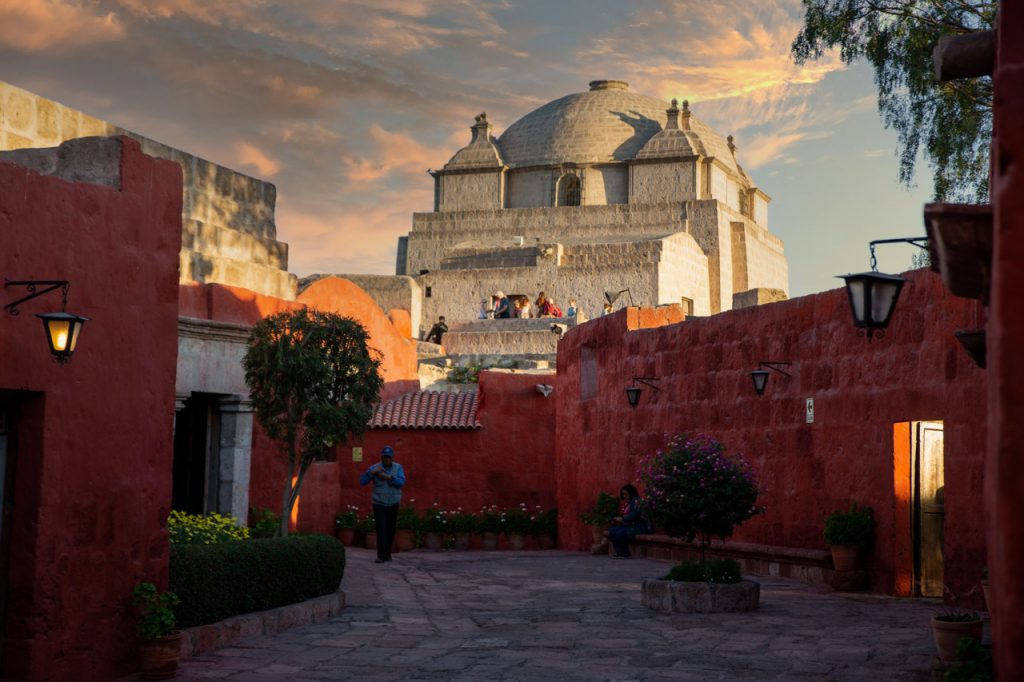
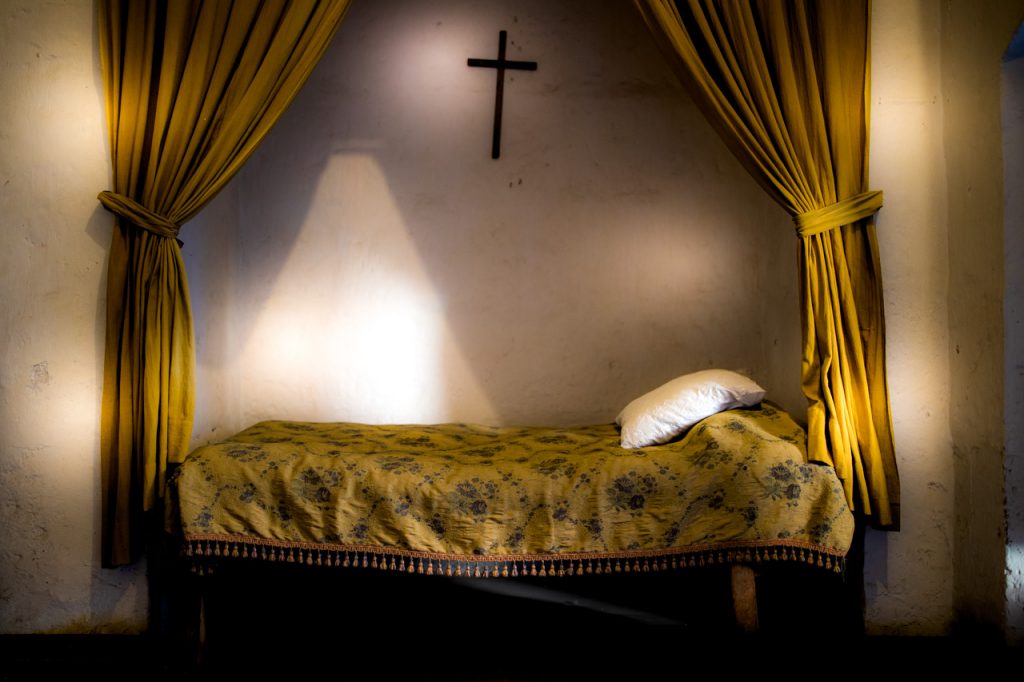
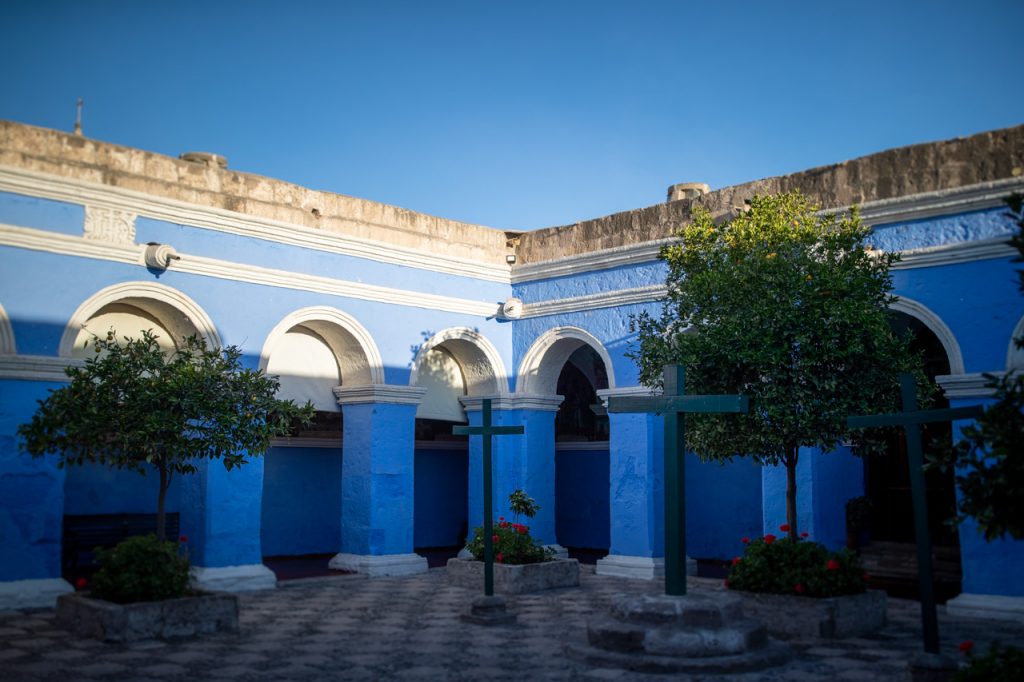
The celebrities of Arequipa
In the late afternoon, we end up in the large square, Plaza de Armas, which is the heart of the city and full of local colour. Street vendors offer everything from popcorn and flash-printed photographs on which tourists can see themselves posing in front of the city’s classic postcard motif: the great cathedral with the cone-shaped peak of the volcano Misti in the background.
“The cathedral is the largest and most beautiful in Peru”, the guide claims as we take a tour of the enormous building. And with almost cinematic timing, his words are accompanied by the organ, which suddenly roars a cacophony of deep sounds. It makes for a set in the tour group, and I may have wet my pants a tiny bit. Whatever the intention, we must compliment the organist. He has a knack for evocative effects and timing!
If you visit Arequipa, a tour of the cathedral is a must. The tour ends on the roof and in the bell tower, from where you have a magnificent view over the roofs of the city, the large square, and the volcanoes.
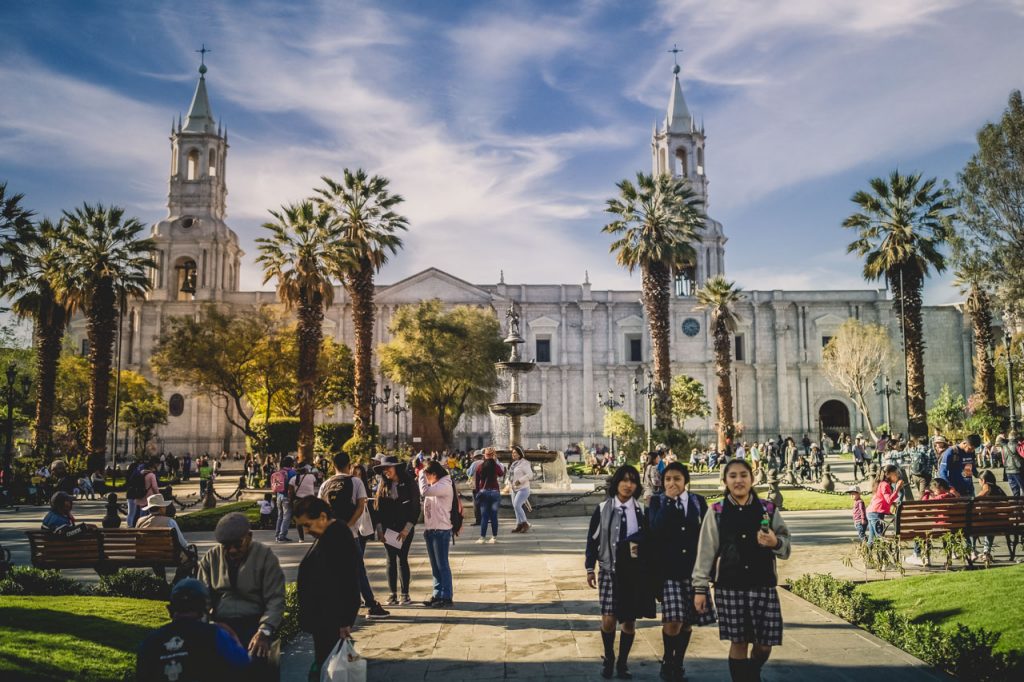
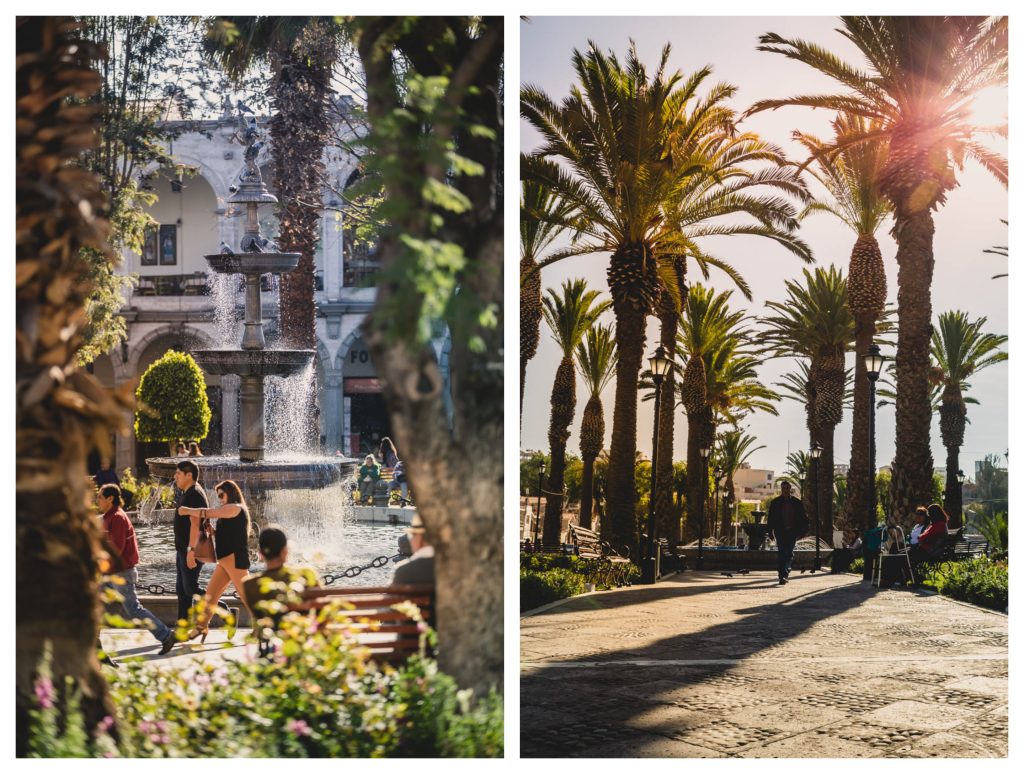
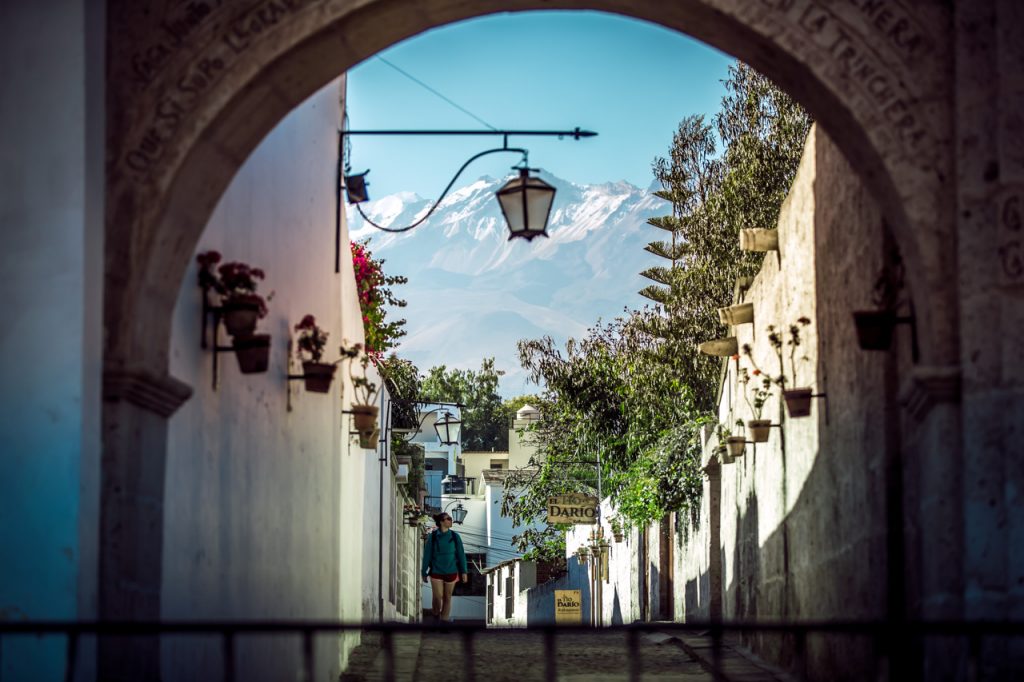
MINI GUIDE
Five experiences in Arequipa
#1 – Take a walk in the city’s picturesque centre, which with its well-preserved colonial buildings is an atmospheric experience. Sit in the Plaza de Armas and enjoy the local life of the city and the view of the cathedral.
#2 – Get a guided tour of the cathedral, ending at the top of the roof and in the bell tower, from where you have a fantastic view over the rooftops of the city.
#3 – Experience the monastic life of Santa Catalina and voluntarily get lost in the labyrinthine streets and many rooms. The monastery is a small, closed world in the middle of the city.
#4 – Go all-in on shopping! Arequipa is a leader in the production of llama and alpaca wool and has souvenir shops in all price ranges. Also swing by the San Camilo market, where you can lose yourself in the selection of Peruvian produce.
#5 – Dine at Hotel Katari’s restaurant, located at the top of the building. From here you have the city’s best view of the cathedral with the cone-shaped volcano Misti in the background. Another popular view, besides the city and the volcano, you will find in the neighbourhood of Yanahuara, which is half an hour’s walk from the center.
